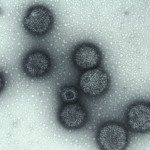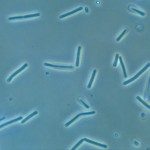Lien vers Pubmed [PMID] – 23818983
PLoS ONE 2013;8(6):e67510
Clostridium botulinum and related clostridia express extremely potent toxins known as botulinum neurotoxins (BoNTs) that cause severe, potentially lethal intoxications in humans. These BoNT-producing bacteria are categorized in seven major toxinotypes (A through G) and several subtypes. The high diversity in nucleotide sequence and genetic organization of the gene cluster encoding the BoNT components poses a great challenge for the screening and characterization of BoNT-producing strains.

